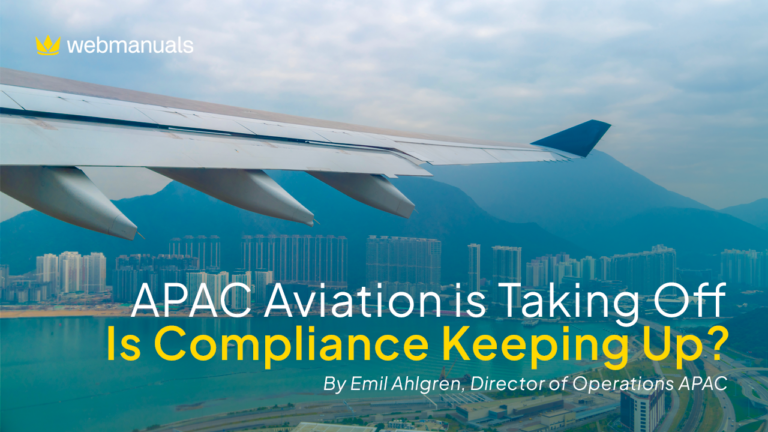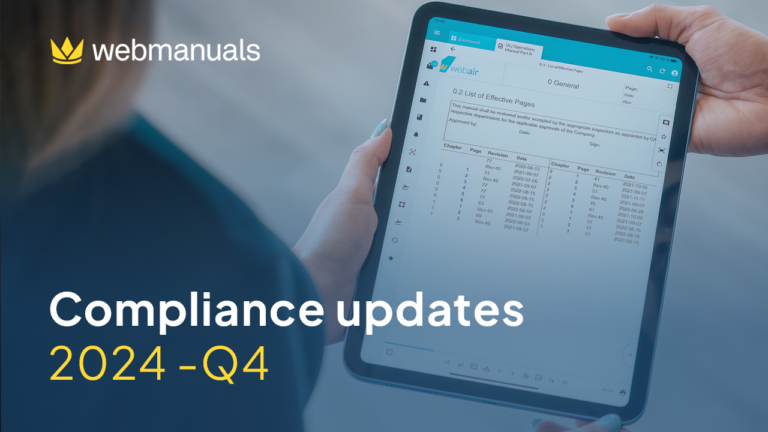Start by ensuring you are compliant with existing requirements. For example, are you aware of the European Aviation Safety Agency (EASA) Commission Regulation (EU) 2016/1199, which came into force in August 2016? This regulation amends Regulation (EU) No. 965/2012 regarding the operational approval of performance-based navigation, certification and oversight of data services providers and helicopter offshore operations. Furthermore, within 2016/1199, are you specifically aware of the new CAT.IDE.A.355, regarding the management of aeronautical databases? (If you’re relaxing because you operate helicopters, take a look at the equivalent new CAT.IDE.H.355.)
When you’re sure you are compliant with all relevant existing regulations, plan ahead. Are you ready, for example, should EASA decide this year (as is very possible) to include safety management system (SMS) requirements in Commission Regulation (EU) No. 1321/2014 (SMS in Part-M)? A new Annex Vc ‘Part-CAMO’ will be dedicated to continuing airworthiness management organisations (CAMOs) managing aircraft operated by licensed air carriers and/or complex motor-powered aircraft (CMPA), representing an estimated 65% of all currently approved CAMOs. Part-CAMO-approved organisations will be required to implement SMS based on a set of proportional management system requirements. Will that affect your business?
Looking further forward, in 2018 EASA is likely to apply new rules for Part-NCC (non-commercial complex) operations. All pilots whose operator is established or resident in an EASA member state will need to have EASA licences/validations and medicals, even if the aircraft is not registered in an EASA member state. These pilots will need to comply with EASA’s Part-FCL (flight crew licensing). This requirement includes pilots who hold a third-country licence (a licence issued by a country that is not an EASA member state), such as a US Federal Aviation Administration (FAA) licence.
We asked regulatory expert Joel Hencks, managing director of aviation consultancy AeroEx, for his view on the year ahead. He agreed: “Major changes are likely in a European regulatory context. There are always amendments on the way although, right now, it’s hard to predict exactly when particular rules will come into force. We need official EU and EASA announcements. Nonetheless, the industry should be monitoring the situation and preparing, not just waiting. Organisations must be ready to respond to, and comply with, any new regulatory requirements.”
Remember, you must move at the pace dictated by the regulators, not your preferences. As soon as a regulation comes into effect, all your relevant operations and personnel must implement the requirements of that regulation. You do not have the luxury, for example, of only introducing an EASA regulation into your operations on deadline day in one country, learning lessons and then moving forward to apply that regulation to your other European operations at your convenience. You must have the means to rapidly inform your entire company of new regulations and deadlines and demonstrate compliance.
In practice, the intelligent use of IT is the only way to ensure compliance in the constantly changing world of modern aviation regulation. You cannot risk human error.
If you want to avoid the wrath of aviation authorities, you need to ensure your manuals are rapidly and reliably updated to reflect regulations coming into effect. From new operational procedures to intensified maintenance and safety requirements, are you ready for 2017? If you’re not, is it really worth risking a financial penalty? Or worse yet, an accident?
Learn more about our compliance libraries and how you can stay on top for 2017 here: https://webmanuals.aero/pages/compliance-libraries




